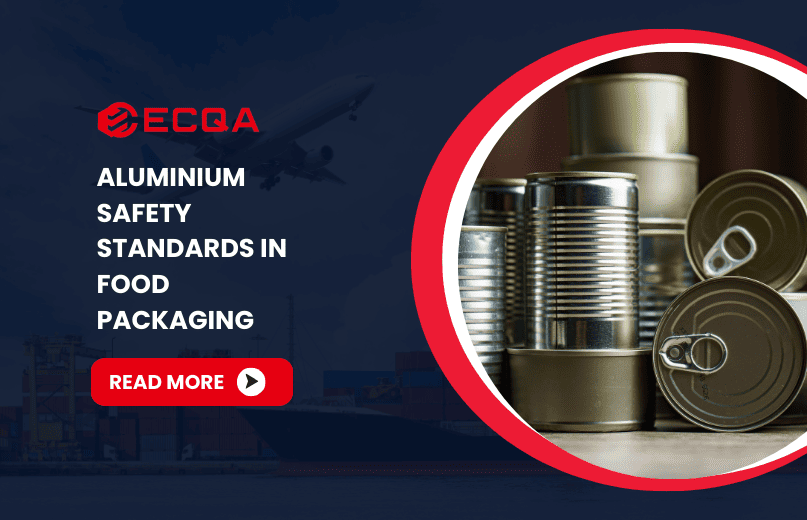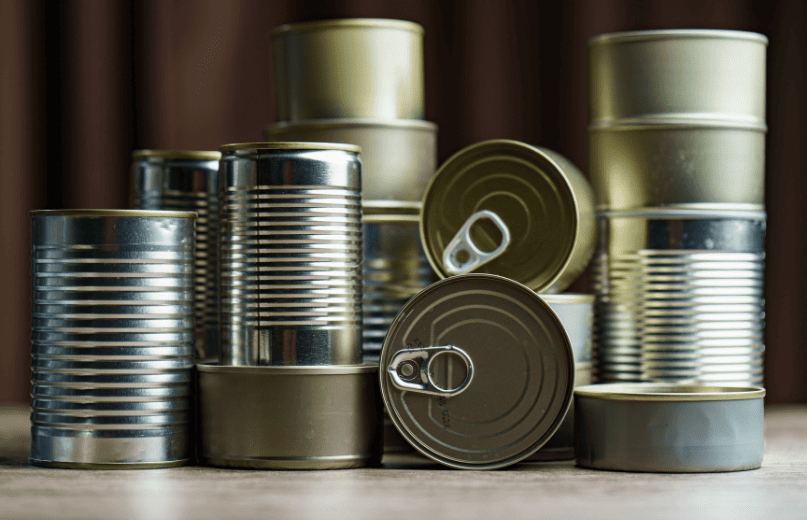
Aluminium Safety Standards in Food Packaging

Recent findings by the Netherlands Food and Consumer Product Safety Authority (NVWA) have raised serious concerns about the safety of aluminum drinkware. Between 2023 and 2024, the NVWA discovered that a staggering 93% of aluminum cups and bottles failed to meet safety standards. These products, mostly imported from outside the European Union, were found to leach unsafe levels of aluminum into beverages, violating regulations designed to protect consumer health.
These findings underscore an important message for businesses in the drinkware industry: ensuring your aluminum products meet strict safety standards is non-negotiable. Not only does failure to comply put consumers at risk, but it also jeopardizes your brand’s reputation and the overall success of your business.
Aluminium has emerged as one of the most effective materials for food packaging, offering a unique combination of protection, durability, and environmental benefits. From beverages to frozen meals, aluminium helps preserve the taste, texture, and nutritional value of food, while also providing a sustainable alternative to other packaging materials.
The importance of packaging goes beyond just protection—it directly influences food safety and the consumer experience. As more consumers demand products that are easy to store, transport, and consume, aluminium packaging has become indispensable in the food industry. Additionally, with growing concerns about the environmental impact of packaging waste, aluminium stands out because it is highly recyclable, offering a sustainable solution for manufacturers and consumers alike.
This article explores the role of aluminium in food packaging, the benefits it brings to food products, and why it continues to be a popular choice for food manufacturers worldwide. We will also delve into the standards and safety measures in place to ensure that aluminium packaging is both effective and safe for food use.
The Role of Aluminium in Food Packaging
Aluminium has long been a key player in food packaging, and for good reason. Its versatility and durability make it ideal for a wide range of food products. From cans and foil wraps to trays and pouches, aluminium serves as a protective shield, keeping food fresh and safe from external elements that could compromise quality.
One of the primary reasons for aluminium’s popularity in food packaging is its excellent barrier properties. Aluminium effectively blocks out light, oxygen, and moisture, which are the main causes of food spoilage. Whether it’s a canned drink or a frozen meal, packaging food in aluminium ensures that it remains fresh for longer periods, retaining its flavor, nutritional value, and texture.
In addition to protecting food, aluminium also helps maintain the ideal temperature during storage and transportation. For products that need to stay hot or cold, aluminium packaging keeps the food at the desired temperature, ensuring that consumers receive it in its best condition. Whether it’s a hot meal or a frozen snack, aluminium’s ability to retain heat or cold is unmatched by most other packaging materials.
Another advantage of aluminium is its lightweight nature. It provides strong protection for food while reducing the overall weight of the packaging, which is especially important when it comes to shipping costs and transportation efficiency. As the demand for eco-friendly packaging continues to rise, aluminium offers the perfect balance of strength, weight, and sustainability, making it a popular choice for food packaging manufacturers worldwide.
Standards and Regulations for Aluminium in Food Packaging
1. Food-Grade Aluminium Standards
When it comes to aluminium packaging for food, safety is of the utmost importance. As such, food-grade aluminium is subjected to rigorous standards and regulations from governing bodies like the U.S. Food and Drug Administration (FDA) and the European Food Safety Authority (EFSA). These organizations set specific criteria for materials that come into contact with food to ensure they are safe for consumers.
Food-grade aluminium is produced under stringent guidelines that guarantee the material is non-toxic, durable, and free from any contaminants that could pose a health risk. For example, food-grade aluminium foil and cans must meet strict limits on the amount of aluminium that can migrate into the food. Only aluminium that meets these strict safety tests is permitted for use in packaging.
The quality control procedures for food-grade aluminium ensure it is free from dangerous substances, including heavy metals, chemicals, and residual contaminants. These stringent measures help safeguard the safety of consumers while maintaining the integrity of the packaged food.
2. Global Regulations and Compliance
Aluminium used for food packaging must comply with a variety of international standards and regulations, ensuring that it meets safety requirements no matter where it is used. These regulations vary across regions but have common goals: protecting consumer health and maintaining the safety of packaged food.
In the European Union, for example, all food contact materials, including aluminium packaging, must follow Regulation (EC) No 1935/2004. This regulation requires that packaging materials not only keep food safe but also preserve its quality, and prevent harmful substances from leaching into the food. In the United States, the FDA’s Code of Federal Regulations (CFR) Title 21 governs all food packaging materials, ensuring they are safe for consumer use.
By adhering to these international regulations, aluminium packaging ensures food safety and quality. Compliance with these standards also guarantees that aluminium packaging is widely accepted across global markets, giving manufacturers the ability to market their products in various regions.
How to Use Aluminium Packaging Safely in Food Packaging
While aluminium packaging is recognized as safe, it is important to follow certain best practices to maintain its safety and effectiveness. The first rule is to always use food-grade aluminium.
Food-grade aluminium refers to aluminium that is specifically processed and treated to be safe for use in contact with food. To be classified as food-grade, the aluminium must meet a set of strict standards that ensure it doesn’t contaminate or pose health risks when used in packaging or storage of food products. Here’s a detailed look at what makes aluminium food-grade:
1. Purity of the Aluminium
The first characteristic of food-grade aluminium is its high level of purity. To ensure that the aluminium does not contain harmful contaminants, it is refined to remove impurities. This high-purity aluminium is essential because it minimizes the risk of releasing unwanted chemicals into food. Typically, food-grade aluminium should have a purity of at least 99.5%.
2. Non-Toxic Coatings and Treatments
In order to make aluminium safe for food contact, it may be coated or treated to prevent harmful reactions with food, particularly acidic ones. These coatings protect both the food and the aluminium itself, ensuring that no hazardous substances are transferred. Any coatings used must be FDA-approved or meet the relevant safety regulations in the region where the product is sold. This is crucial for ensuring the material is non-toxic and safe to use.
3. Corrosion Resistance
A critical property of food-grade aluminium is its resistance to corrosion. Aluminium can degrade when exposed to moisture and food, which can affect both the material’s integrity and the food it contains. Food-grade aluminium naturally forms a protective aluminium oxide layer when exposed to air, helping it resist corrosion. This protective barrier makes sure the material stays intact, preserving the quality and safety of the food.
4. Regulatory Compliance
For aluminium to be used safely in food packaging, it must comply with stringent regulations. Agencies such as the FDA in the U.S., the European Food Safety Authority (EFSA) in Europe, and other national regulatory bodies set standards that govern the materials allowed for food packaging. Aluminium that is designated as food-grade has undergone testing and certification to ensure it meets these safety guidelines.
5. Prevention of Leaching
Food-grade aluminium is engineered to prevent leaching, which is the process by which harmful chemicals or metals seep into the food. This is particularly important for acidic foods like citrus fruits or tomatoes. High-quality food-grade aluminium ensures that it does not react with the food, thereby safeguarding the consumer’s health and preventing contamination of the food.
6. Temperature Resistance
Aluminium used in food packaging needs to be able to withstand a wide range of temperatures, from freezing to high-heat environments. Food-grade aluminium is capable of maintaining its form and safety in both hot and cold conditions, ensuring that it doesn’t degrade or compromise food safety when exposed to extremes in temperature.
7. Recyclability
An important advantage of food-grade aluminium is that it is fully recyclable without losing its quality. Unlike many other materials, aluminium can be recycled multiple times without degradation, making it an environmentally sustainable choice for food packaging. This recycling ability aligns with the growing focus on reducing environmental impact in food packaging industries.
8. Food Safety Certifications
To guarantee that aluminium used in food products is safe, manufacturers often seek certification from recognized safety organizations. These include certifications like ISO 22000 for food safety management systems and FDA approval. These certifications are important indicators of quality, reassuring businesses and consumers that the aluminium is suitable for food packaging.
As the demand for sustainable and safe packaging solutions continues to grow, it’s important to ensure that your packaging materials meet the highest standards of quality and food safety. Aluminium packaging not only offers an eco-friendly solution but also plays a critical role in maintaining food integrity.Many imported food products undergo inspection to verify compliance with packaging regulations.
If you are considering aluminium packaging for your food products, it is essential to have it tested for safety and compliance with industry standards. ECQA offers specialized aluminium testing services that ensure your packaging meets the strictest food safety regulations.

 Request Free Sample Report
Request Free Sample Report